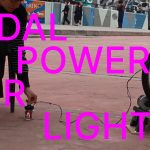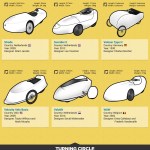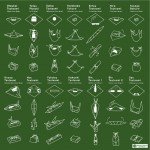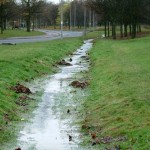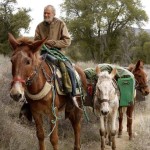FARMING
- Comparing the carbon footprints of urban and conventional agriculture [nature cities]. “Results reveal that the carbon footprint of food from urban agriculture is six times greater than conventional agriculture. However, some crops (for example, tomatoes) and sites (for example, 25% of individually managed gardens) outperform conventional agriculture. These exceptions suggest that urban agriculture practitioners can reduce their climate impacts by cultivating crops that are typically greenhouse-grown or air-freighted.”
- Do you know how tomatoes taste? [Ambrook Research] “To get an ‘ideal tomato,’ many consumers may need to grow it themselves.”
- Have you heard of Wendell Berry? [Ambrook Research] “After years of written correspondence with the iconic rural writer, a “sixth-generation farm kid” reflects on getting to meet his hero.”
- George and the Food System Dragon. [Scan the Horizon] “In focusing his considerable powers of intellect and communication towards addressing problems of our food system George Monbiot appears to pick a fight not with agribusiness but with the food sovereignty movement.”
- In search of sustainable fragrance [Modern Farmer] “Many perfumes and fragrances are unsustainably extracted from plants and animals or made from synthetic chemicals. I wanted to find another way.”
- Moving into the Agrihood [Modern Farmer] “Planned, farm-centered neighborhoods are on the rise in the United States, offering farm-to-table food and a strong community for residents.”
- The farmers leaning on each other’s tools [Civil Eats] “The cost of specialized farm equipment is one of the biggest barriers for small-scale and beginning farmers. Cooperatives are springing up around the nation to help bridge the gap.”
- Podcast: “Perils of plastic packaging” [The Great Simplification].
- Podcast: “Chemicals in our clothes” [Craftsmanship Magazine]
- A Norwegian seaweed utopia? Governmental narratives of coastal communities, upscaling, and the industrial conquering of ocean spaces. [Maritime Studies] “The assumptive growth-centred policy narratives employed leave little room for small-scale, locally embedded alternatives called upon by many experts on sustainable and socially just blue resource governance.
DIGITAL TECHNOLOGY
- Where have all the websites gone? [from jason] “So when we wonder where all the websites have gone, know it’s the curators we’re nostalgic for because the curators showed us the best the web had to offer once upon a time. And the curators— the tenders, aggregators, collectors, and connectors— can bring us back to something better. Because it’s still out there, we just have to find it.”
- Songs made directly from sunlight [website]. Via Marie Verdeil.
- History and environmental impact of digital image formats [Unthinking Photography] “As the ecological footprint of photography shifted from film rolls and developing chemicals to digital storage, network transfer and processing power, I see only three ways to reduce our footprint: making fewer pictures, reducing their quality, or using better image formats. Which of these options do you prefer?” Via Marie Verdeil.
- In your face [The New Atlantis]. “Digital-device culture is an experiment on a colossal scale, the results of which we have tried to measure in IPOs, quarterly growth rates, engagement metrics, and daily active users, not in human flourishing. But that is where we are incurring the real costs.”
- The poster’s guide to the internet of the future. [The Verge] “The platform era is ending. Rather than build new Twitters and Facebooks, we can create a stuff-posting system that works better for everybody.”
- What are analog bulletin boards used for today? [Plos One] “The bulletin board still holds a firm place in a media ecology where local communication is in demand, and exists in parallel with electronic media.”
- The Anti-Ownership Ebook Economy [Engelberg Center] “Something happened when we shifted to digital formats that created a loss of rights for readers. Pulling back the curtain on the evolution of ebooks offers some clarity to how the shift to digital left ownership behind in the analog world.”
DEGROWTH
- Transforming work: A critical literature review on degrowth, post-growth, postcapitalism and craft labor [Journal of Cleaner Production] “Many scholars have called for a profound change in capitalist growth-oriented provisioning systems and business models to help address the unique socio-ecological challenges of the 21st century. Reenvisaging how work is organised, constructed, and valued is an essential part of this change.”
- The infrastructural conditions of (de-)growth: The case of the internet. [Ecological Economics] “Infrastructure studies represent a domain that remains significantly uncharted among degrowth scholars. This is paradoxical considering that infrastructures constitute a fundamental prerequisite for the equitable distribution of many aspects of human well-being that degrowth proponents emphasize.” Via Nate Hagens.
HIGH-TECH
- The new climate denial [Center for Countering Digital Hate]. Questioning high-tech “sustainable solutions” like electric cars and wind turbines is now considered “climate denial”.
- Dolly Parton: ‘I’m a low-tech girl in a high-tech world’ [Gossip Herald]
- The right to repairable energy: A political ecology of off-grid solar repair in Zambia. [Political Geography] “The sale of off-grid solar products in Zambia has grown rapidly over the past decade, with around 1 million small-scale solar products sold between 2018 and 2022. However, these products, which are promoted as a means for energy-poor populations to access basic energy services, tend to have short working lives.”
URBANISM
- A Fence and a Ladder: Subversive Acts of Everyday Urbanism at Home. [2021 AIA/ACSA Intersections Research Conference: COMMUNITIES] “This paper documents and examines the power of an informal, spontaneous, low-tech spatial gesture: a ladder built to straddle a fence between two properties. The ladder was built in order to give the children in the neighboring backyards a way to traverse the boundary easily, without the need for permission and without the risk of climbing and falling or cutting themselves.”
TRANSPORTATION
- Following a star: Study explores the remarkable ways traditional cultures use their environment to navigate. [University of York] Via Wrath of Gnon.
- New generation of Austrian Night Trains. [flickr]
- Road Hazard: Evidence Mounts on Toxic Pollution from Tires. [Yale360] “Researchers are only beginning to uncover the toxic cocktail of chemicals, microplastics, and heavy metals hidden in car and truck tires.”
